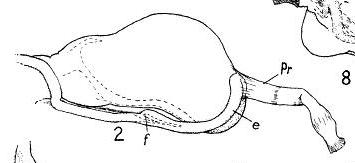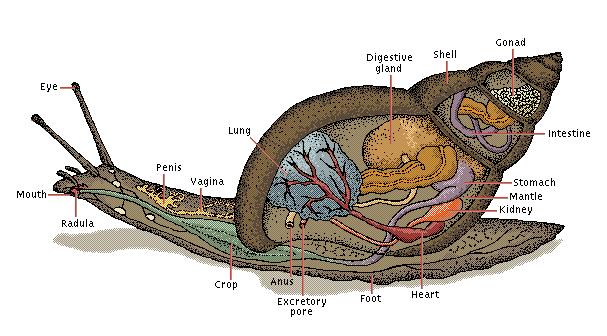
Reproduction
Euchemotrema leai
is a hermaphroditic species with
both male and female sex organs present in a single individual (Martin
2000). One specific
characteristic of the species is that it displays a very noticeable
epiphallus in the floor of the genital chamber which bears a
miniscule flagellum as shown in the photo (Webb
1950). Although
monoecious, land snails possess both sex parts, self-fertilization
does not occur rather the two copulating hermaphroditic partners
both play the male and female roles in the relationship.
They begin by both exchanging sperm (Martin
2000). These packets
of sperm are exchanged in bundled spermatophores in order to prevent
self-fertilization (Martin 2000).
From this point, the sperm is stored inside the body waiting
to fertilize the eggs until just before the laying of the eggs (Martin
2000).

This
species is oviparous meaning it lays eggs.
When studying their egg-laying habits, it was found that
Lowland Pillsnails prefer to release their eggs in loose soil and
decaying vegetation (Gugler 1963).
The adults dig flask-shaped burrows to depths of about 1-2cm
and deposit 5-10 eggs in each hole.
The eggs have a whitish shell that is flexible but not
brittle (Gugler 1963).
The eggs are partially calcified and soft (Martin 2000).
The outer gelatinous layer, surrounding an inner gelatinous
layer, is about 0.3mm thick.
Beneath this outer layer is a sheet of irregular, calcareous
granules. These granules
measure approximately 0.1mm thick (Gugler
1963). In total the
egg as a whole possesses an ovoid shape measuring 1.6-1.9mm across
the surface (Gugler 1963).
Return Home
